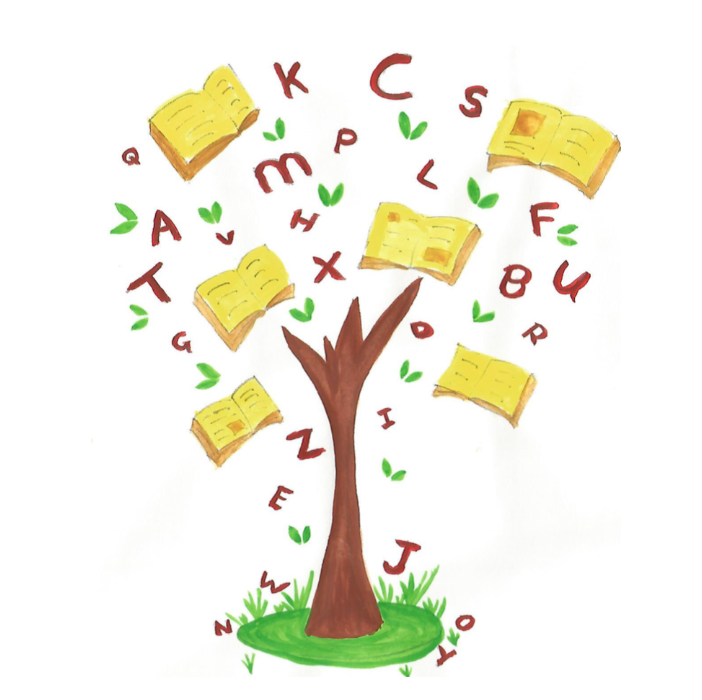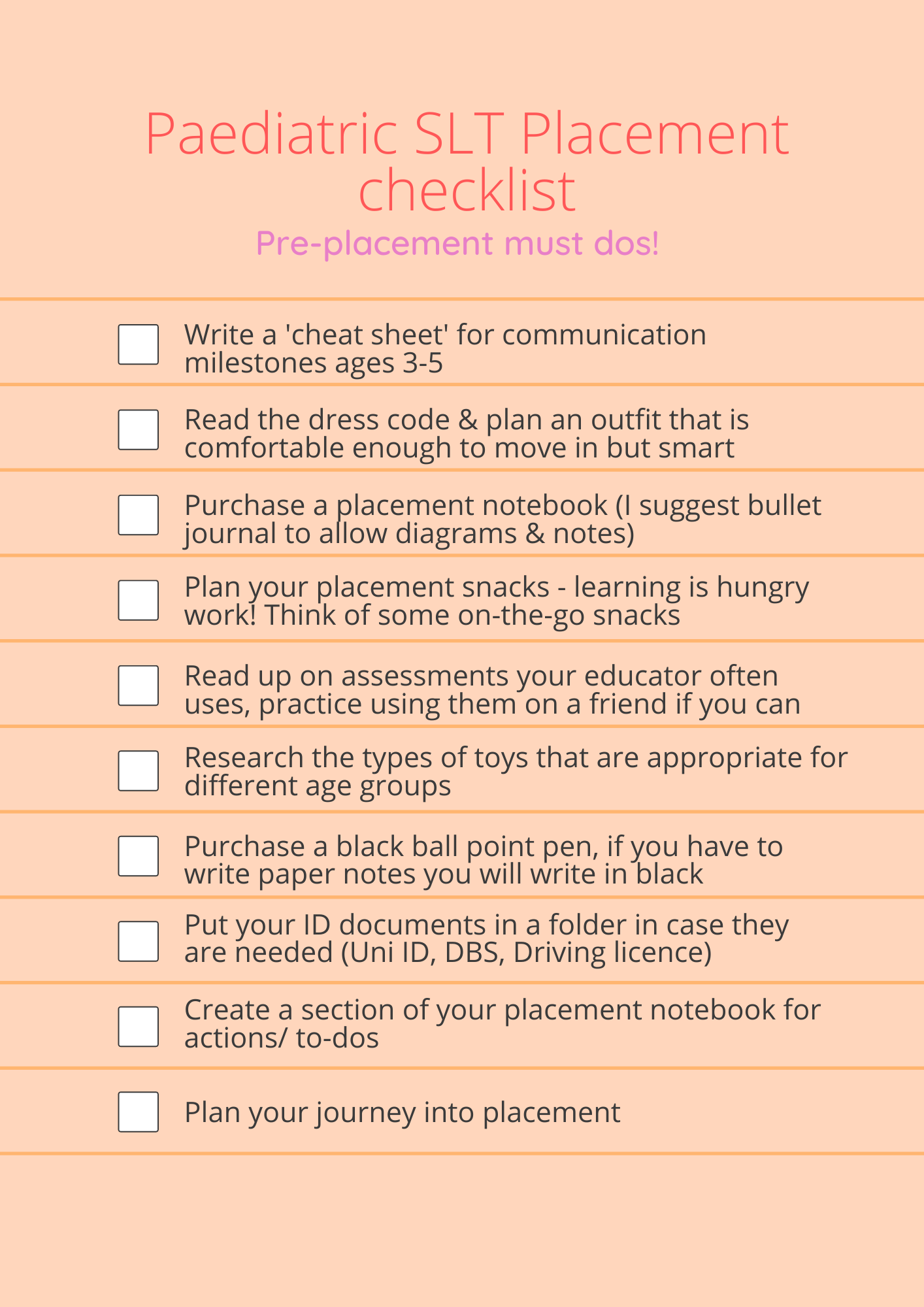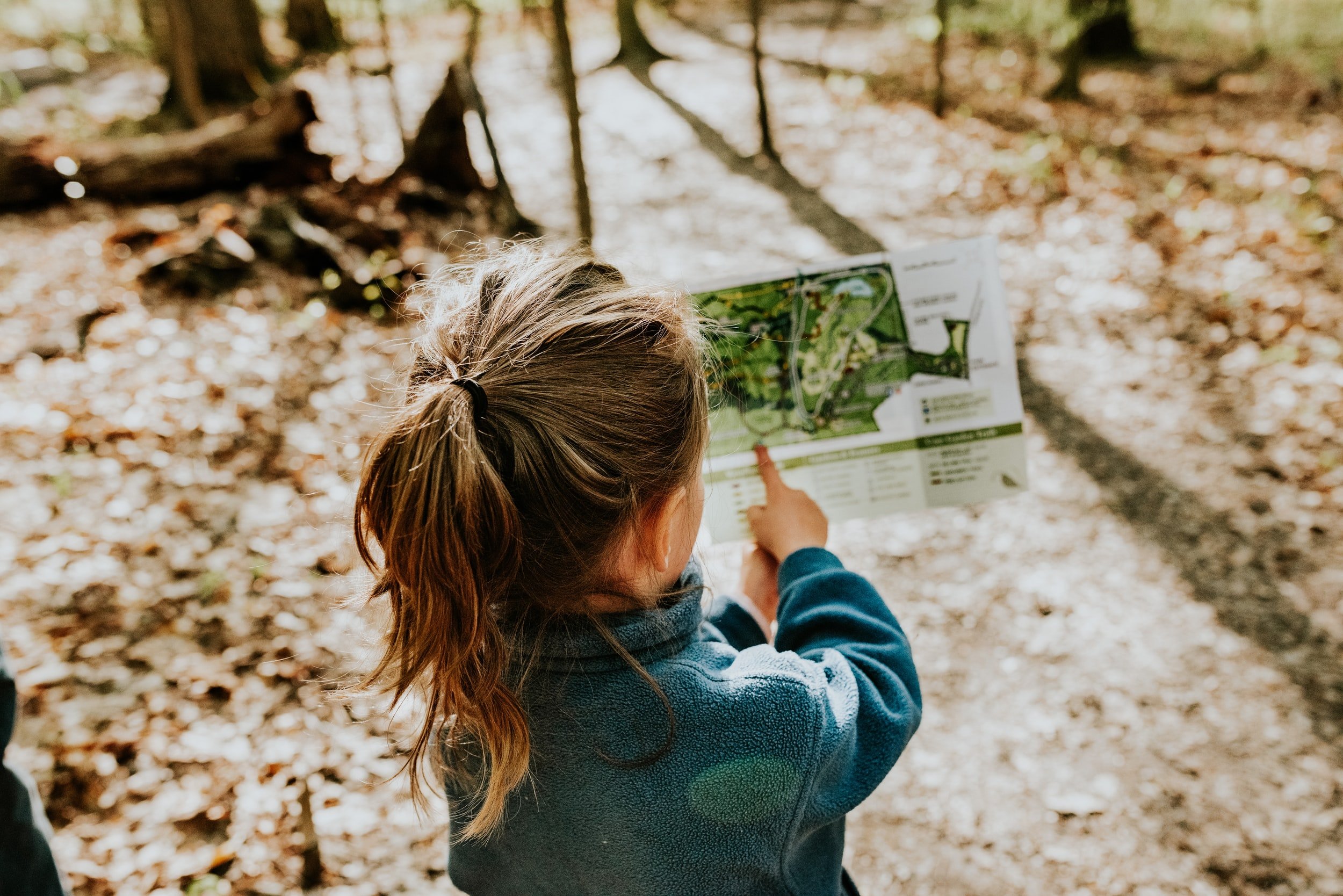10 things you should do before your paediatric speech therapy placement
Going on your first SLT placement - you will want to do these things to get prepared!
“Failing to plan is planning to fail” - Benjamin Franklin
Now if you are anything like me you will be feeling ALL the feelings about your first paediatric speech and language therapy placement! Excited to finally do the job, nervous that you don’t really know what you’re doing and apprehensive about what it will be like (will you even like being a therapist?).
First off I want to reassure you that in this situation Benjamin Franklin isn’t totally right about placement! You have been prepping and planning throughout your degree by learning about communication, speech sounds, linguistics, neurology, anatomy, child development…you have been planning. So don’t feel like you need to go into overdrive preparing for your placement. The point of placement is to learn. You will feel out of your depth, you’re supposed to! Try to embrace the feeling and just go with it, remember, your educator was you once.
If you do want to feel a little more prepped I’ve got you! Below is my 10 pre-placement actions that you should take if you want to feel that little more prepared. From things to buy, to things to read, this list has my top tips.
Save/ download the checklist to refer to later, and check out the links below for my placement prep must-haves!
P.S. did you know I now have an Etsy shop with resources for SLTs to be just like you? Want to check it out? Click here!
5 Ways to boost language with an Easter egg hunt!
Ways to help a late talker at Easter
With the Easter weekend fast approaching, here are 5 Speech Therapist approved ways to sneak in some language targets using an Easter egg hunt…
(p.s. feel free to do the hunt ‘for real’ a first before going in for these adaptations!)
Draw out a map of where you have hidden the eggs for your little one!
Why this boosts language?
This develops matching and allows you to discuss where the eggs are using lots of lovely location vocabulary (e.g. “under the plant pot”, “behind the sofa”).
2. Big vs. small sorting
Why this boosts language?
This develops comparative language, and introduces size concepts in a way which allows for lots and lots of practice.
Collect the eggs and then sort into 2 piles, big and small.
3. Colour sorting
Why this boosts language?
Colours are abstract concepts and so can take a while for little ones to learn. Grouping all the collected eggs into their different colours (sorting) is a precursor to being able to label the colour name. It also allows you to model the names of the colours over and over again.
4. Give location instructions!
Why this boosts language?
This supports your little one’s understanding. Slowly increase the number of words in a sentence your little one has to pay attention to (e.g. “put the egg in the basket” - 1 word; “put the small egg in the box” - 2 words).
For this adaptation you will need a couple of different location options (e.g. basket, box, bag). Ask your little one to follow instruction related to where they put the eggs. If this is really easy for them you can step it up by adding in different action words too! (e.g. “make your green egg fly to the basket”; “make the big egg roll to the box”.
5. Give your eggs some feelings!
Why this boosts language?
Through this activity you can talk about the outward features of different emotions (e.g. smiling mouth, closed eyes, frowning eyebrows etc.). If you want to step this up, ask your little one to act out the different emotions and talk about how the body looks as well as the face when we are experiencing different emotions.
Either draw on your facial expressions, or have some eyes, mouths, noses ready to go (cut & stick/ blue tac!).
*Disclaimer: Some of the links are affiliate links which means I earn a small commission should you choose to click through and buy with the link.
3 ways to use Duplo and Lego to boost communication skills!
Ever wondered how to use your little one’s interest in lego & duplo to boost their communication.
Here are my 3 top tips!
Boost your little one's attention skills by asking them to copy you!
For this you will need some matching pieces (e.g. 4 red bricks, 2 windows, 6 yellow bricks).
Create a Lego structure (e.g. make a tower: red brick, yellow brick, window, 2 yellow bricks, red brick).
Place the remaining (matching) Lego pieces in front of your little one and ask the to make the same as you!
Your 'model' structure can be as simple or as complicated as your little one needs, and after they have finished let them be the 'master builder' and you have to copy what they have built!
Take the opportunity to model concepts while you play!
I wouldn't recommend doing this at the same time as the above activity, but instead while your little one is happily building and playing away.
While they are building label what they are holding and where they are putting the bricks.
Lego lends itself nicely to working on concepts: positional language, colours, size, shape. Model single words or short sentences to describe what your little one is doing (e.g. "put the brick on", "red square brick").
Grab a dry-wipe marker and use Lego to work on speech sounds!
For this one you will need a marker and preferably bigger Lego bricks!
Write your little one's target sound on the side of a Lego brick, and a variety of other mastered/ easy sounds on the other bricks. Have fun building a short tower with your little one.
Once you have made your 2-3 brick tower, read the nonsense word you have 'built' by blending together the sounds on the side of the tower!
* Disclosure: some of the links in this post are affiliate links and if you go through them to make a purchase I will earn a small commission. The decision is yours, and whether or not you decide to buy something is completely up to you.












